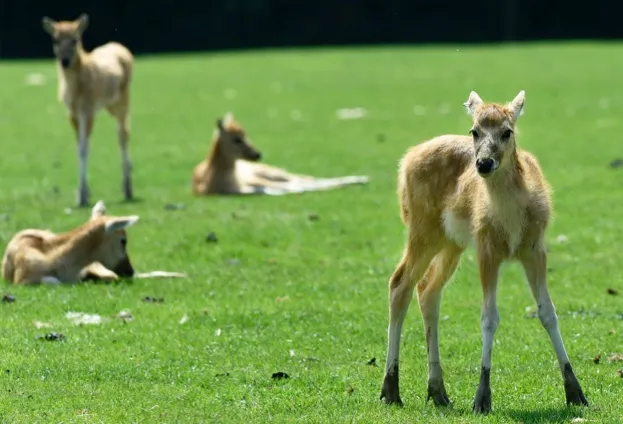Wildlife detectives from the Zoological Society of London (ZSL) and the Natural History Museum (NHM) have teamed up to analyse the DNA of China’s iconic Père David’s deer, which are classified as extinct in the wild.
Scientists used two unidentified deer skins dating back over 150 years from a collection at the Natural History Museum.
Using DNA analysis they were able to distinguish that they were in fact specimens from the last-recorded wild herd of Père David’s deer.
“Our study provides a great example of how historical archives such as museum collections can inform contemporary approaches to wildlife conservation, says lead author Dr Samuel Turvey from ZSL.

Four young Père David's deer fawns at ZSL Whipsnade Zoo © ZSL
This new information is vital for conservationists who hope to successfully reintroduce the species into the wild in the future.
Furthermore, this study confirms that Père David’s deer last occupied the southern Chinese island province of Hainan and not northern mainland China as previously thought.
“The fact that Père David’s deer still exist in zoological collections around the world, including ZSL Whipsnade Zoo, raises the tantalising prospect of one day returning these animals to their natural habitat on Hainan,” says Turvey.
In Chinese mythology the species were known as ‘sibuxiang’, meaning ‘the four unlikes’ as they were believed to be a combination of four other animals: cow, deer, donkey and horse (or camel in some variations).
Père David’s deer stand apart from other deer with their rearward facing antlers, and all that are alive today are decedents from a 19th century captive herd living just outside of Beijing.
The herd lived on the grounds of the Imperial Hunting Lodge but were killed by hunters who broke into the grounds during the Boxer Rebellion in 1900.
Fortunately, some animals had been sent to Europe before this, from which the current individuals are descended.
Père David’s deer is the only species of mammal surviving in captivity while being extinct in wild.
Père Amand David (1826–1900) was a Jesuit missionary who lived in China and was the first European to visit the captive deer herd.
He also was the first Westerner to see the giant panda and was responsible for the popularisation of gerbils as pets in Europe.